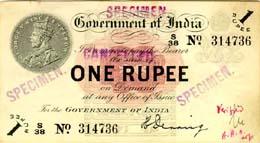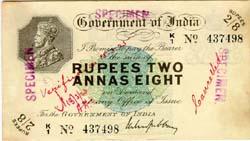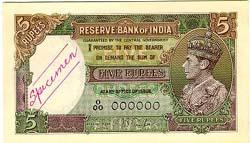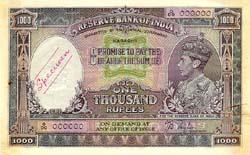
Rupee One
Rupee One - Reverse

Rupees Two and Annas Eight - Obverse King's Portrait Series
Regular issues of this Series carrying the portrait of George V were introduced in May, 1923 on a Ten Rupee Note. The King's Portrait Motif continued as an integral feature of all Paper Money issues of British India. Government of India continued to issue currency notes till 1935 when the Reserve Bank of India took over the functions of the Controller of Currency. These notes were issued in denominations of Rs 5, 10, 50, 100, 500, 1000, 10,000.

Rupees Fifty

Rupees One Thousand

Rupees Ten Thousand

Rupees Five - First Note issued by Reserve Bank of India
This was followed by Rs 10 in February, Rs 100 in March and Rs 1,000 and Rs 10,000 in June 1938.

Rupees One Hundred

Rupees One Thousand

Rupees Ten Thousand
to be continued..

No comments:
Post a Comment